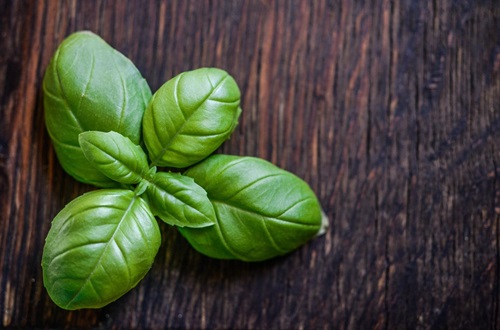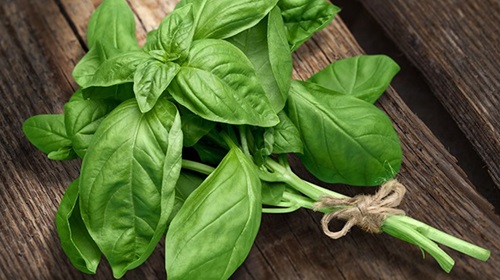Oct 24th 2024
A Complete Indoor Growing Guide for Basil
Basil is at the top of many lists for favorite herbs to grow in the garden. Emily (Genovese) basil, Thai basil, and purple basil are some popular types. It’s also a very useful herb that can be added to a variety of different recipes. Here are some tips for growing hydroponic basil at home.
Choosing Your Hydroponic Basil Variety
Any type of basil may be cultivated hydroponically. Italian broad leaf basil, lemon basil, Genovese basil, and sweet basil are some of the best varieties to think about cultivating. "Emerald Towers," "Greek," and "Siam Queen" are some well-liked varieties. Particularly sweet basil grows easily making it a suitable choice for hydroponic systems.

One of the wonderful things about basil is that it's a "pick and go" herb, meaning you can select a few leaves for supper here and there and then let the plant grow new leaves in their place. It will typically mature in eight to ten weeks, and you may keep pruning the leaves until the plant bolts or goes to seed.
Essential Requirements for Growing Basil Hydroponically
Basil is easy to grow and requires fairly minimal care. This is in contrast to many crops that need to grow for long periods with lots of maintenance. Basil generally does well under high light levels and enjoys warm temperatures, a pH that is rather acidic, and relatively low EC levels.
Freshly picked basil has one of the best smelling herbs. Growing basil in your ALTO Garden GX Hydroponic Tower Garden produces a deliciously fragrant, fresh garnish for basically any dish. However, specific needs might change according on the growing system, season, and other variables.
The following general conditions are advised for basil cultivated hydroponically:
Seed Germination
It's really easy to cultivate basil from seed. For best results, follow our germination guide and plant your seeds in rockwool cubes. Basil takes a little longer to germinate than other plants such as lettuce, but you’ll still have a high success rate with basil seeds.
Optimal pH Levels
In hydroponic systems, basil prefers a pH range of 5.5 to 6.5. The proper pH balance guarantees nutrient availability and the best possible plant health; hence it is essential to regularly check and adjust the pH.
Lighting Requirements for Hydroponic Basil
Basil does not require extremely bright light but should ideally be exposed to 14–16 hours of light every day. LED grow lights are perfect for basil, providing enough light while being highly energy-efficient.
Managing Nutrients for Healthy Growth
The plant's nutritional needs can be effectively met by a variety of nutrient solutions. Creating your own crop-specific nutrient solution is also an option, allowing greater flexibility to modify the nutrient content as needed. Because basil leaves contain significant levels of calcium and potassium, it is important to maintain relatively high concentrations of these elements compared to other nutrients.
In addition to potassium and calcium, magnesium and nitrogen are important for proper basil development. The synthesis of essential oils in basil, which are highly valuable in culinary, chemical, and pharmaceutical industries, is strongly correlated with magnesium.
Nitrogen is another essential ingredient required to improve leaf yields.
Your Indoor Basil Garden Awaits!
Experience the joy of harvesting fresh basil daily with a simple, easy-to-use hydroponic system - perfect for home gardens and fresh flavors every day.
Shop NowHarvesting Process

Your basil will eventually develop incredibly thick, bark-like trunks.This is a natural way to help your basil plant grow even more leaves and stems.Additionally, the sturdy branches enable your basil to transport all the nutrients and water needed to the leaves, which can reach hand-sized size.You may pick more vigorously as the plant gets bigger, but it's ideal for your basil plants if you always leave some leaves growing. Each time you harvest, fresh leaves and branches will regrow rapidly.
It usually takes about three to four weeks to produce your first crop of basil when you grow it from seed. Your basil plant will soon grow stronger and quicker, allowing you to collect fresh basil as frequently as every few days.
Tips for Growing Basil in a Hydroponic System
- Basil can grow rather quickly, so regular trimming is necessary to keep it healthy. When your basil begins to produce second leaf nodes for branching, you'll know it's time to prune.
- To prevent bolting, remove any early flower buds and dry the leaves until only the healthy ones are left.
- Use a hydroponic nutrient solution that is rich in calcium, nitrogen, and potassium if you want your basil to flourish.
FAQs
- Are nutrient deficiencies common when growing hydroponic basil?
Since hydroponics is a hobby that requires some trial and error, you may run into nutrient problems if you're just starting out. Keep an eye on your plants and watch for any irregularities. Do some "plant deficiency research" and make necessary adjustments if something seems strange to ensure healthy hydroponic basil growth. - How big do basil roots get in hydroponic systems?
Basil roots grow moderately in most hydroponic systems. They are generally medium in size, which makes them ideal for hydroponic towers and other indoor setups. - Is it possible to grow basil hydroponically throughout the year?
Of course! The ability to regulate growth conditions, which enables year-round production, is one of the benefits of hydroponic systems. But remember to maintain ideal light, temperature, and nutritional conditions for consistent hydroponic basil growth. - Is it possible to grow basil hydroponically with other plants?
In a hydroponic system, basil may be grown with other plants as long as their nutritional and environmental requirements are similar. - Does growing basil in a vertical hydroponic system need any particular considerations?
Make sure there is enough room between plants in vertical installations to allow for light penetration and air circulation. Basil's comparatively small size and weight allow it to thrive in a vertical hydroponic tower system.




